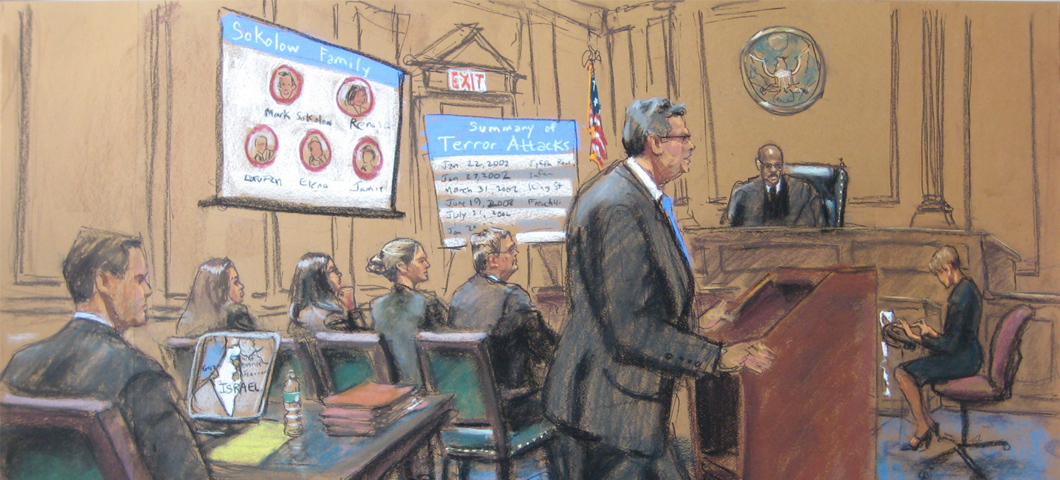How Trial Presentations Facilitate Clear Communication of Challenging Legal Issues
How Trial Presentations Facilitate Clear Communication of Challenging Legal Issues
Blog Article
How Efficient Test Presentations Can Win Your Instance
The performance of trial presentations is usually ignored, yet they play a vital role in shaping juror understandings and affecting situation end results. As we explore the components that contribute to an engaging test discussion, the inquiry remains: what particular methods can lawyers use to ensure their message not only resonates but likewise forces action?

Comprehending Your Target Market
Comprehending your target market is vital for providing an effective trial discussion. Understanding that will be present in the court-- jurors, judges, and opposing guidance-- permits you to tailor your message in a manner that reverberates with them. Each group has distinctive expectations, predispositions, and histories, which can considerably affect their assumption of the case.
For jurors, it is important to think about demographics, life experiences, and cognitive predispositions. Jurors may come from different occupations and social histories, influencing their analysis of proof and arguments. Engaging with them through relatable examples and clear, straightforward language can promote much better understanding and empathy.
Judges, on the other hand, focus on legal requirements and procedural stability. Presentations ought to be concise and grounded in the law while respecting courtroom decorum. Understanding the court's choices and previous judgments can additionally improve your technique.
Efficient communication rests on recognizing these differences and readjusting your discussion design appropriately (trial presentations). By anticipating the audience's responses and resolving their worries, you can produce a more persuasive story that mesmerizes interest and promotes desirable end results
Crafting a Compelling Narrative
A well-crafted story offers as the backbone of an effective test presentation, directing the target market via complicated information while stimulating emotional responses. This story must begin with a clear and interesting intro that sets the phase, outlining the crucial styles and issues at stake. Developing a relatable protagonist-- frequently the client-- can develop an individual connection with the court, attracting them into the tale.
The body of the narrative must offer the truths in a logical series, weaving together proof and testimony to construct a cohesive debate. Each piece of details must support the overarching style, reinforcing the preferred message without overwhelming the target market with unneeded details. Change expressions can be particularly effective, aiding to preserve circulation and keep the court involved.
Eventually, the verdict ought to reverberate emotionally, summarizing the instance's importance and advising the court to take action via their verdict. By crafting an engaging story that is both structured and mentally powerful, lawyers can efficiently share their instance's advantages, making it less complicated for jurors to understand and keep in mind the bottom lines long after the trial wraps up. This strategy not only informs however additionally persuades, enhancing the probability of a desirable outcome.
Using Visual Aids Properly

Aesthetic help play an essential role in improving trial presentations, transforming complicated data into available info that jurors can quickly comprehend. By using charts, graphs, diagrams, and multimedia elements, attorneys can clarify intricate factors and preserve jurors' focus. Aesthetic help assist in the understanding of evidence, making abstract ideas tangible and learn this here now relatable.
When selecting aesthetic aids, relevance and simpleness are vital. Each visual need to directly support the situation story and enhance key debates without overwhelming the viewer. Overly intricate visuals can diminish the message, causing confusion instead than clearness.
Furthermore, the tactical placement of aesthetic aids during discussions is necessary. They must be introduced at pivotal minutes to highlight crucial proof or to show significant adjustments or patterns. This timing permits jurors to refine information properly, improving retention and recall throughout considerations.
Furthermore, it is essential to make sure that visual help are technologically suitable with the courtroom setting. Familiarity with the tools and a backup strategy can prevent technological glitches that may disrupt the circulation of the discussion. In summary, reliable use of aesthetic aids can substantially reinforce a test discussion, leading to a more powerful connection with the court and a more convincing instance in general.
Involving Feeling and Empathy
While offering valid evidence is necessary, engaging emotion and compassion in test presentations can exceptionally affect jurors' assumptions and decisions. Jurors are not just decision-makers; they are people that respond to narratives that reverberate on an individual degree. By weaving emotional aspects right into the discussion, lawyers can create a connection that transcends simple data and YOURURL.com lawful jargon.
Storytelling is a powerful tool in this context. By providing the instance as a story that highlights the human impact of the events in concern, lawyers can stimulate sensations of concern, anger, or even are afraid - trial presentations. These emotions can considerably persuade jurors, making them a lot more likely to empathize with the plaintiff or accused

Ultimately, a trial discussion that effectively engages feeling and compassion can create a compelling disagreement that reverberates deeply, leading jurors to feel a personal stake in case, thereby boosting the opportunities of a favorable decision.
Exercising Distribution Strategies
Engaging emotion and empathy lays a strong foundation for trial discussions, yet the effectiveness of these elements depends upon the shipment methods used by the lawyer. Understanding distribution techniques is important for making sure that the message resonates with the court. This entails exercising tone, rate, and body movement to boost reputation and link with the audience.
Rehearsing the discussion numerous times permits attorneys to fine-tune their style and identify areas for enhancement. Recording session can offer important insights into one's nonverbal signs and vocal inflections, aiding to get rid of disruptive routines. Furthermore, obtaining feedback from peers can highlight staminas and weak points, guiding additional improvement.
Reliable use stops can also be a powerful technique; they permit the court to absorb crucial details and enhance psychological effect. Lawyers must likewise be mindful of eye contact, as it promotes count on and involvement with jurors.
Eventually, the mix of practiced delivery techniques and the psychological resonance of the presentation can dramatically affect the jury's understanding, producing an engaging situation that stands out in their minds. The power of well-executed delivery can not be overemphasized in the pursuit of a beneficial decision.
Verdict
In recap, reliable test discussions are pivotal in influencing juror decisions. A comprehensive understanding of the target market, combined with a compelling narrative, cultivates interaction and understanding of complex issues. The critical usage of aesthetic help improves clarity, while psychological resonance cultivates compassion read this article and connection. Understanding shipment strategies further intensifies these components, ultimately adding to a persuasive situation discussion. By incorporating these parts, attorneys can considerably enhance the possibility of accomplishing a desirable verdict.
Report this page